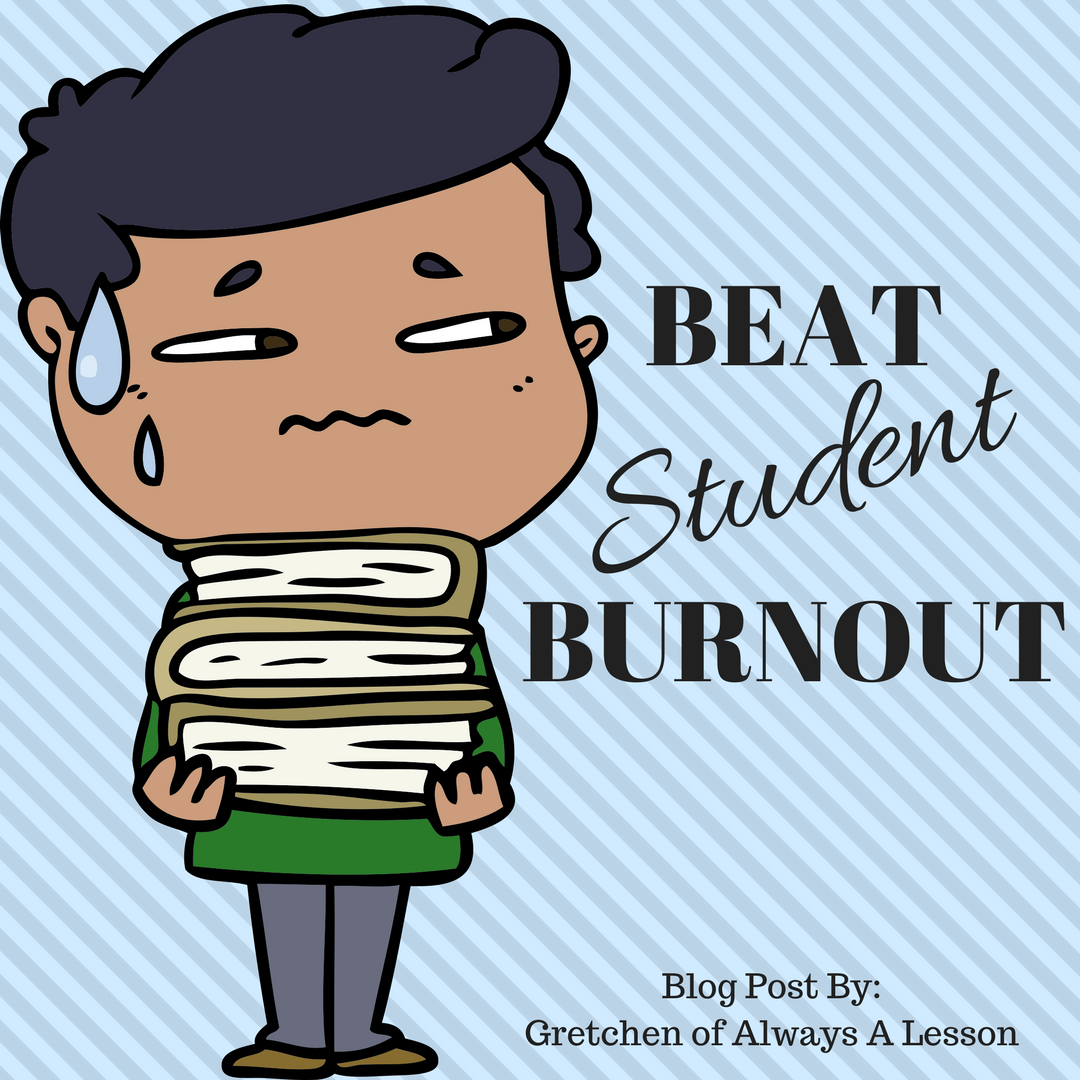Beat Student Burnout- 5 Strategies to Enhancing the Student Psyche
I recently participated in a #podcastPd chat on the topic of ‘Elevate Your Teaching and Avoid Burnout.’ Although I think this topic is worthy of discussing with you, I have mentioned several posts prior on the topic:
- Blog- Stressed Out? You Must Be a Teacher
- Podcast- Making Time for All the Parts of You
- Podcast- Keep Healthy Relationships in Motion
- Podcast- Bonus Edition- Interview with Kitty Boitnott (Career Transition Coach)
So, I thought I would try a new take… how about addressing ‘Student Burn Out?’
Being a student is hard. Not only do you have to focus while at school and complete required assignments at home, but you also have to:
- Socialize- Be a kid and play with friends
- Be Responsible- Complete chores at home
- Cultivate Your Talent- Participate in a variety of activities that peak your interest (sports, clubs, musical instruments, etc)
To fulfill all these parts of a child requires time and energy.
Many parents came to me when I was in the classroom stating their kids didn’t have time to complete hours of homework. While I agree that hours of homework is not effective, completing small amounts of nightly homework is effective due to routine practice of skills. I also understand the need for students to participate in extra-curricular activities as well as have some down time, but my goal as the educator is to prepare students the best I can and part of that mission is to provide opportunities for students to practice. I have a lot of content I need to get through in a short amount of time and if students don’t practice outside of school, then I have to practice with them during school which leaves less time to introduce the new stuff.
I say all of this to say that balance is important. Students need to complete homework, chores, and extra-curricular activities. Some days, homework might eat more of the balance chunk and others it might be back-to-back extra-curricular activities. When students are not getting enough time to rest and rejuvenate or their schedules are out of balance, burn-out sets in.
We as adults know this to be true. When we work, work, work, we get easily irritated and are low on energy. We need short breaks to chat with friends or kick up our feet. We also need to invest in ourselves so that we can use our creativity and fulfill our life’s purpose. So we too are spread thin with a jam-packed schedule that requires careful balance.
The great part about adults needing balance in their lives just like kids is that we can model how to achieve it since we “get it.”
Below are some suggestions on how students can beat burnout and be effective in the classroom and in life:
- Provide a big picture assignment schedule– Provide an assignment calendar for the upcoming week or the month so students can take ownership in assignment completion and time management. By allowing students flexibility in turning in assignments, busy extra-curricular schedules can easily be worked around.
- For example, if Tuesday nights are extremely busy for a student with back-to-back activities, then they can double up on assignment completion on Monday or Wednesday to compensate for a busy Tuesday (just as long as the assignments are completed and turned in by the deadline (ie. end of the week.))
- This approach is also handy for students leaving school on vacations for longer periods of time.
- Teach kiddos how to manage their time – As mentioned above, giving kiddos a long-term assignment requires teaching them to successfully manage their time. Try a longer short-term assignment calendar (ie. two days of upcoming assignments) and students can choose when to complete the tasks. Then build up to a longer-term assignment calendar (ie. three to four days) with the end goal of giving students a monthly calendar of assignments that need to be completed with mini deadlines along the way (ie. end of week). It might be a good idea to clue parents in to the time management discussion so they can help their child develop big picture vision and appropriately plan or schedule their work time while at home.
- Build brain breaks into instruction – To combat a busy schedule, you often need to rest to gather enough energy to be successful in the mayhem. Kids need breaks too. Build in a minute or two throughout the academic day for students to stretch, giggle, sing, etc. Turning off the brain for a few moments allows for more information to be stored!
- Give students a stress outlet – As mentioned above, brain breaks help students tap out of the stress of learning for a moment so they can gain energy for the long haul. Burning energy is a big part of de-stressing so allow kiddos to walk, tap, jump, etc. so that energy can be expelled, muscles worked, and stress released. Create a safe space for students to make noise and exert energy without disrupting nearby classrooms (ie. banging sticks on pillows gets out energy but is quiet so as not to disturb nearby learners).
- Encourage students to share personal goals with you– It’s important to know what students have to balance so that you can not only empathize with their challenges, but you can better help them strategize when you are clued in to their particular situation outside of school. Chat 1:1 with students during downtime, make notes of their outside time commitments, and then check in often with how they are managing their academic and personal balance.
What suggestions would you add to the list to help students beat burnout?



 Get Edu-Tips, Freebies and grab your FREE Study Guide for Gretchen’s New Book!
Get Edu-Tips, Freebies and grab your FREE Study Guide for Gretchen’s New Book!